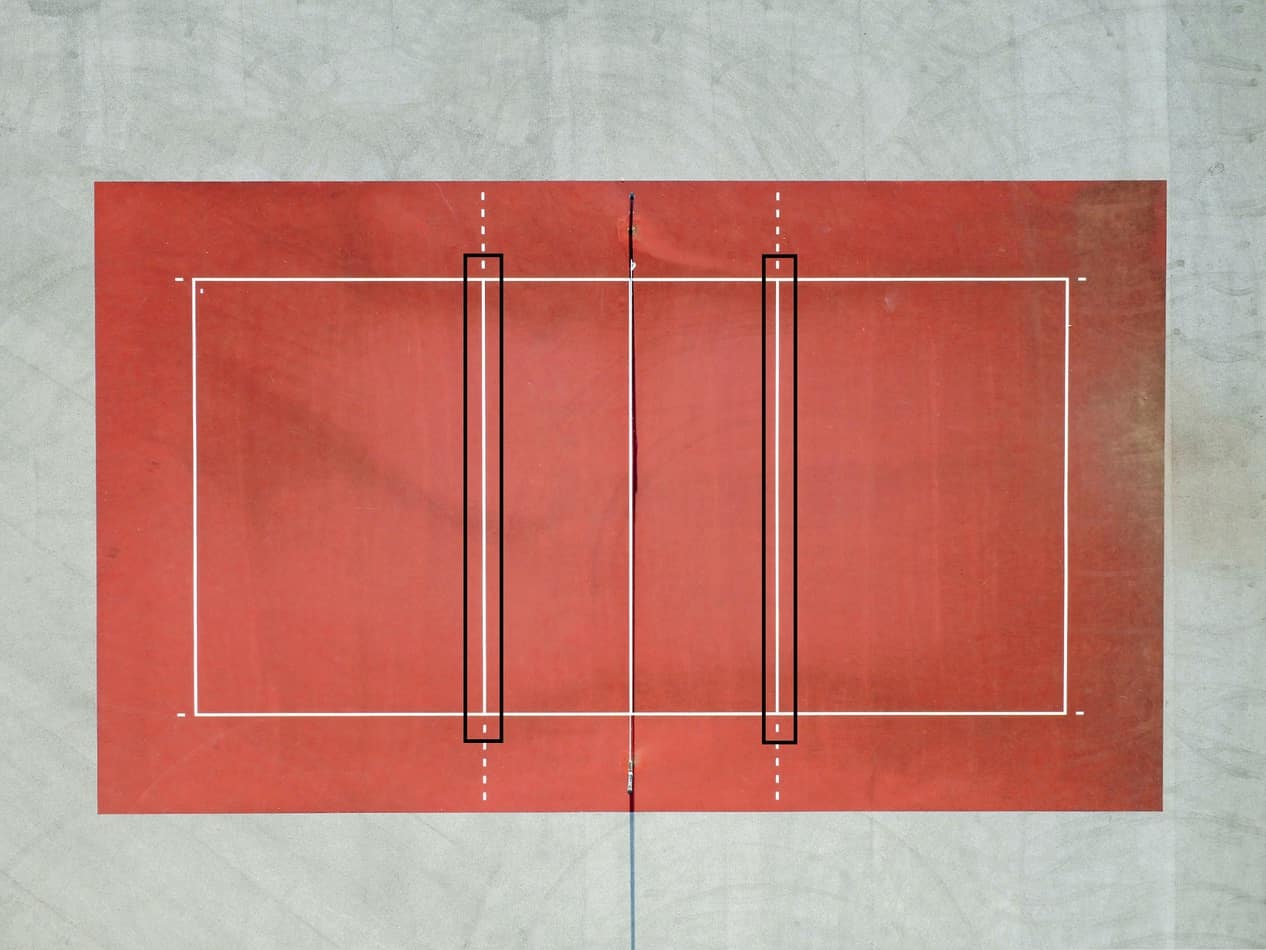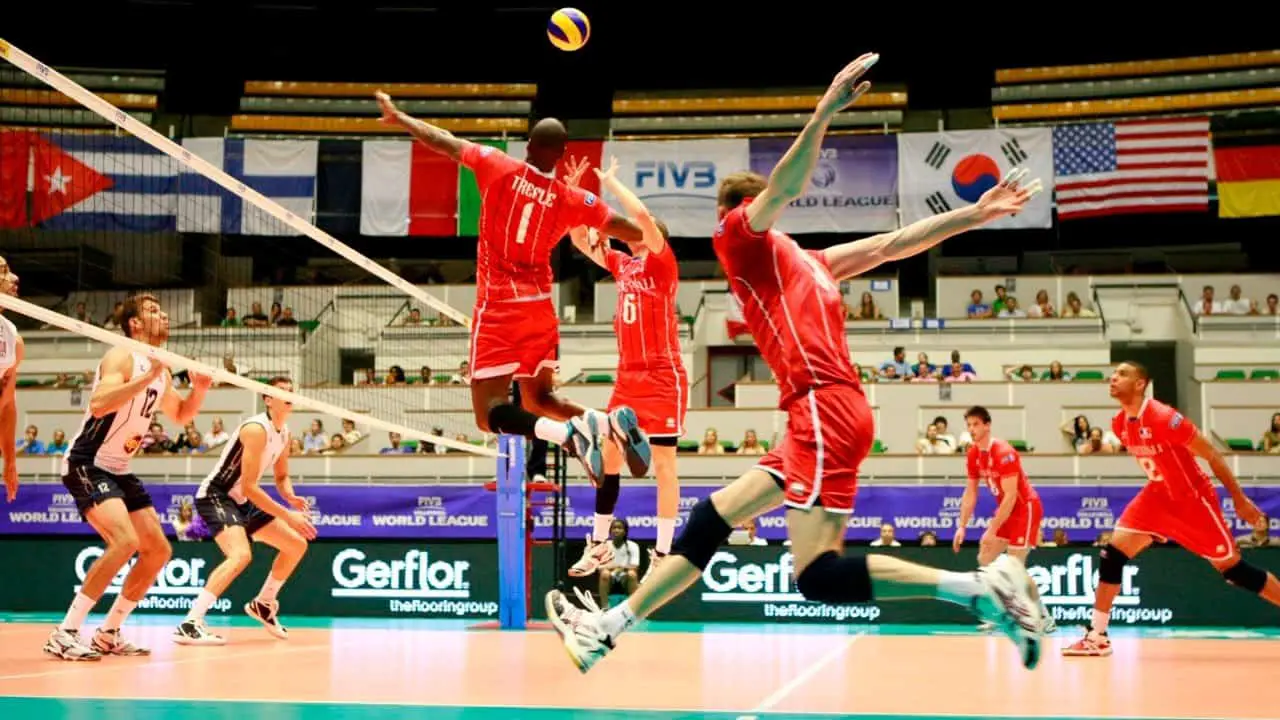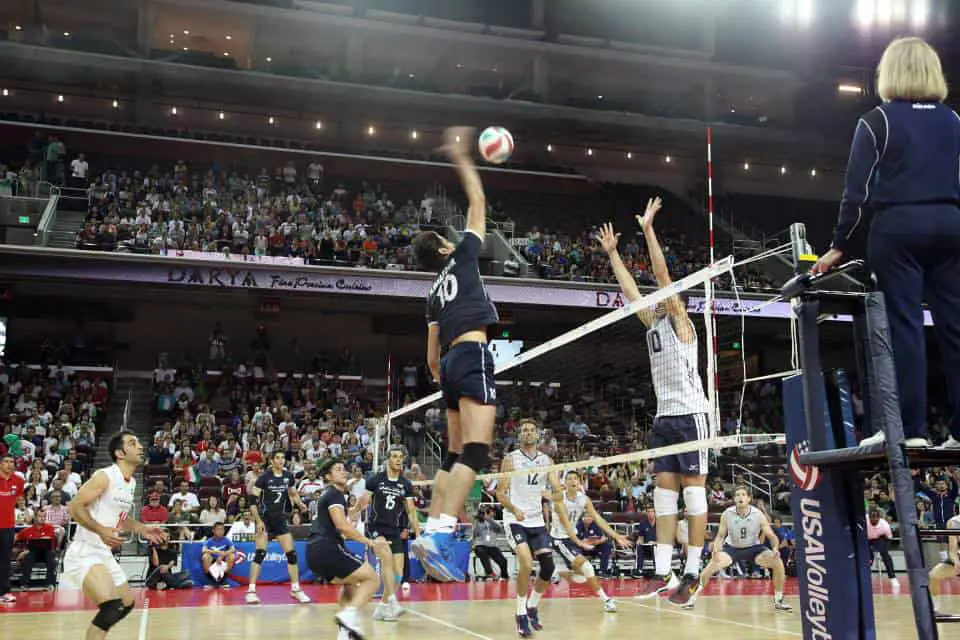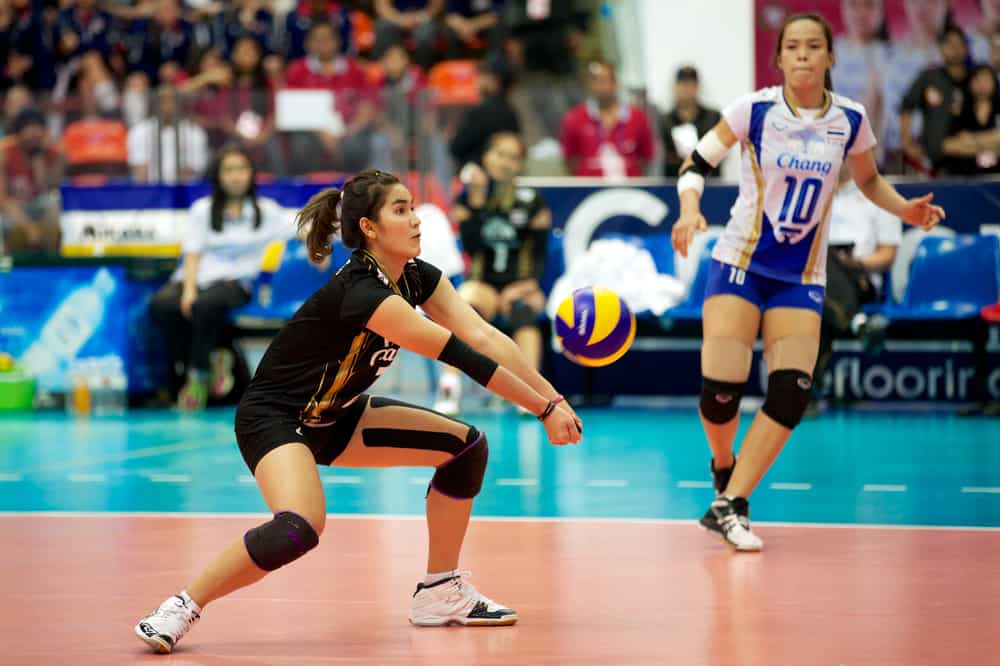Volleyball is an exciting sport that can be played by almost anyone. Whether played as a hobby with a few friends or on a skilled, competitive team, there are a few things you must know, including the rules of the 10-foot (3-meter) line.
The 10-foot line in volleyball, also known as the attack line or 3-meter line, is the boundary drawn on either side of the net placed ten feet from the center of the court. It runs across the width of the court and serves as a guide to show players if and when they are allowed to attack.
The rules around the attack line can be confusing, so we will flesh them out for you in this article. We will start with a brief overview of the rules and then share a little bit of information about the zones surrounding the 10-foot line.
Table of Contents
Where Is the 10-Foot Line Located?
The 10-foot line runs the width of the court ten feet (3 meters) from the net or the center of the court. The rules and regulations regarding this section of the court are a little bit complex and might differ depending on your level of play.

The line is the point of reference for players to know how to hit the ball. The 10-foot line can also be called the attack line or the 3-meter line, depending on the country you play in.
What Is the Purpose of a 10-Foot Line?
At first glance, it may appear that the purpose of the attack line is to separate the front row and back row players. When they start a match, players 1, 5, and 6 stand behind the attack line while players 2, 3, and 4 are positioned in front.

However, while players are allowed to move freely around the attack line, it primarily serves as a reference point for when the back row players can set or attack the ball. Your position on the court, which frequently changes during rotations, is ultimately the determining factor in what the attack line means to you during a game. Ignoring this will ultimately lead to a fault.
What Is a Fault?

A fault is an action that breaks the rules of the game. There are all kinds of ways that players or teams can receive a fault, including:
- Reaching violations
- Foot faults
- Ball handling errors
Falling to follow the rules around the 10-foot line can cause players to lose points and forfeit the service depending on their possession at the time of the fault. For example, if a back-row player hits the ball with their foot over the 10-foot line, they will lose their team’s point.
Rules Regarding the 10-Foot Line
There is some confusion around the rules of the 10-foot line because different player positions are allowed (or not allowed) to do certain things depending on their location concerning the line. If you are trying to win your games, being a good team player is critical to meeting that goal. Thus, you should be sure that you have a complete understanding of all the rules, including those involving the 10-foot line.
There are some important notes to keep in mind about positions and zones related to volleyball’s attack line. Understanding these components are essential to being a skilled and competitive volleyball player.
Front Zone
The front zone is the area between the center of the court (the net) and the attack line. Front row players (positions 2, 3, and 4) start each set off in this portion of the court. These players, known as the attack zone players, are responsible for:
- Setting – an overhead pass from one player to a hitter. Some hits will be considered a “dump” to an undefended spot, or a set up for a spike.
- Attacking – the act of hitting or spiking the ball in order to end a play and earn points. Attacking can mean a spike, set, tip, or over-the-head contact.
- Blocking – a defensive technique used to prevent an attack and the other team from gaining points. This move involves blocking a spike or attack, in the hopes of sending the ball back into the opponent’s court.

Because of their position in relation to the 10-foot line, they can do a lot of things that the back row players cannot do. For example, they can reach across the net during a block. It is also allowed for their hands to cross the net during an attack, as long as contact was made with the ball before their hand or arm crossed.
Back Court
The back court is the area of the court between the 10-foot line and the baseline (the end of the court). This zone is predominantly where the back row players (1, 5, and 6) are positioned.
Back row players are allowed to attack the ball as long as they do so from behind the attack line. However, an important note is that the player can land in front of the attack line, so long as their jumping-off point was behind it. In fact, being able to land in front of the attack line is a sign of a strong back row player. They are also allowed to play the ball above the net, as long as it does not go over to the opponent’s side.

One of the most essential restrictions for back row players involves the attack line. They are not allowed to jump higher than the top of the net or hit the ball over to the other team. Doing so would be a violation of the rules and result in a fault. The only time they can jump above the net is to hit the ball to another player.
Libero
The libero is a special position in volleyball that does not participate in the rotation, unlike the other players. They also are very easy to spot because they wear a different color jersey than other players on their team. Because they do not participate in the rotation, liberos are strictly back row players and can only substitute for other back row players. Their primary purpose is to act as defensive players, and are often strong passers.

Another significant difference for this position is that they can freely move back and forth across the attack line, although the rules that apply to their position are slightly different. This player cannot do an overhead set from in front of the 10-foot line while their teammates attack the ball above the net. Conversely, they are not allowed to attack the ball from in front of the line, unlike front row players.
If you are new to the libero position, it can be confusing to re-learn some of the attack line rules. Liberos are subject to additional restrictions if making a play from the front zone, so it is best to be strategic about your moves.
Final Thoughts
Your position on the court, whether you’re a front or back row player, will determine what the 10-foot line means to you. Regardless, its primary purpose is to act as a reference point for how each position can hit the ball.
Remember, back row players must be behind that line to begin spiking. Understanding all of the rules in volleyball will make you a more skilled and confident player, enabling you to support your teammates as best as you can.
